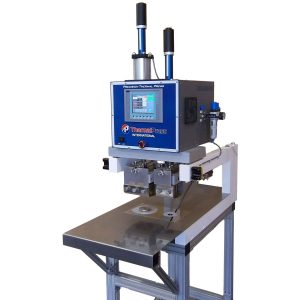
Food Product Packaging – Heat Sealing or Ultrasonic?
For food packaging manufacturers, vertical fill form sealing (VFFS) technology is an important area for cost-saving innovation.
During procurement, most companies look to this tightly regulated process for improvement because modern technologies have already improved throughput for the rest of the manufacturing line.
For many, VFFS bagging remains a bottleneck process.
Unsurprisingly, this leads manufacturers currently using heat sealing equipment to consider ultrasonic solutions, and those using ultrasonic equipment to consider heat sealing.
The old adage, “the grass always seems greener on the other side of the fence,” is just as true here as it is anywhere else.
However, advances in engineering have given modern heat sealing solutions the edge over ultrasonic assembly when it comes to ensuring FDA-compliant food packaging with zero tolerance for nonconformance.
Ultrasonic vs. Heat Sealing Cost Analysis
One of the main drivers towards ultrasonic sealing is the idea that manufacturers can reduce film consumption by reducing the seal width. While it is true that ultrasonic seals can have a width as small as 2 millimeters, modern heat sealing solutions are no longer limited to double-digit seal widths like they were years ago.
More importantly, the perceived benefit of creating smaller seals – increasing the amount of interior space food packaging products can occupy – doesn’t always result in the savings that ultrasonic equipment manufacturers imply.
For instance, one has to include the knife gap measurement in any calculation of seal width. In some cases, this can double the width of the space made unusable by ultrasonic sealing. On the other hand, heat sealing’s benefits often outweigh the value of having a few extra millimeters of interior volume.
When it comes to production capacity in bags-per-minute, heat sealing is the clear leader. Most high-volume plastic assembly facilities will place a clear priority on reducing production bottleneck than superficially reducing seal width.
Additionally, the smaller sealing width can lead to quality control issues that, in an industry as tightly regulated as food product packaging, easily presents problems.
Wider seals tend to be more secure, and most commercially available sealing films are designed for heat sealing. This gives heat sealing a regulatory advantage that also improves the bottleneck problem by preventing time-consuming quality control troubleshooting downtime.
Consumer Preference for Food Product Packaging
While ultrasonic welding may allow manufacturers to use marginally less material per bag on the VFFS line, consumers tend to prefer the thicker, more stable feel of heat sealed plastic containers.
The reasoning is simple – a package that is too thin and too easy to break open leads consumers to worry about contamination.
From the consumer point of view, FDA regulations are not the final word on the possibility of product contamination. Consumers feel that manufacturers who cut corners on the most visible element of a product may have cut corners on other, more substantial processes as well. Thin ultrasonic seals do not inspire the same level of confidence and trust that heat-sealed packages do.